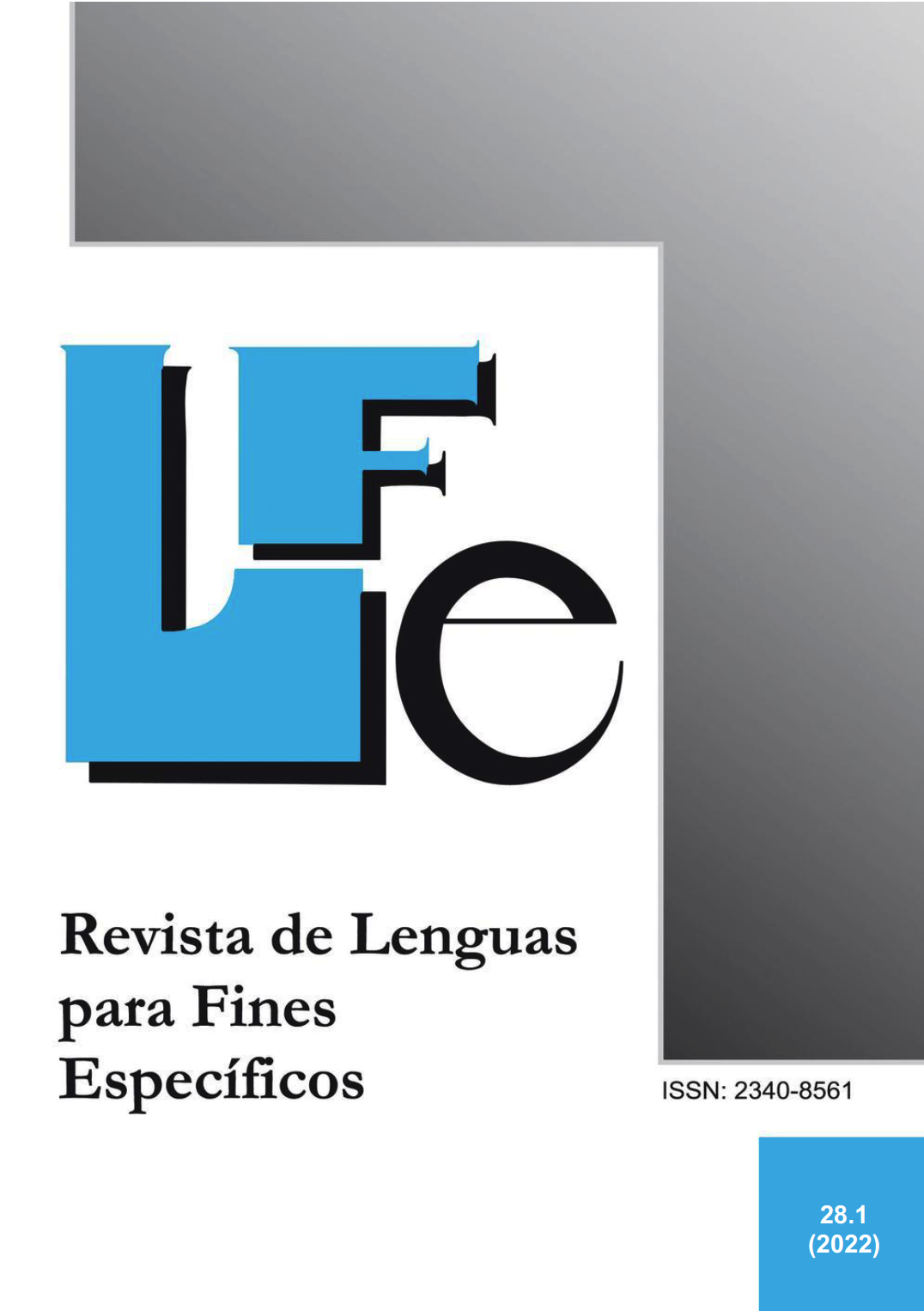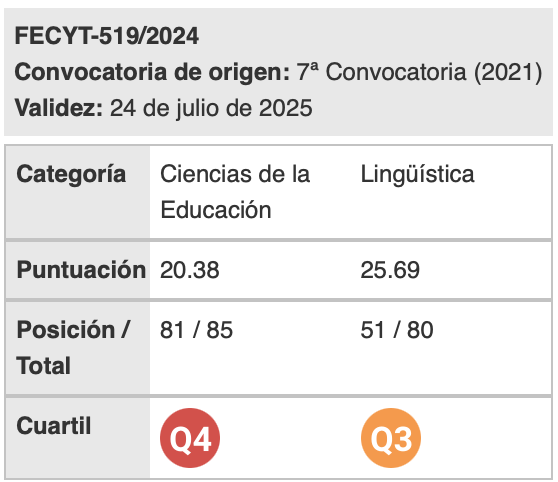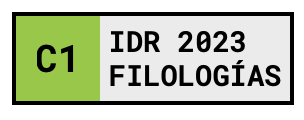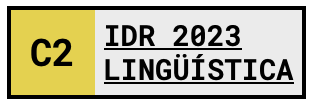A multicompetence perspective on the use of conjunctions in writing in English as a second language for academic purposes
Keywords:
conjunctions, academic writing, multicompetence, second language, crosslinguistic influenceAbstract
Following the multicompetence framework (Cook and Li, 2016; Ortega, 2016), this paper aims at (a) analysing differences in the use of conjunctions across the L1 Spanish and the L1/L2 Spanish groups and the L1 English and the L1/L2 English groups and (b) determining the possible occurrence of crosslinguistic influence across groups. Findings revealed that no significant differences were found across the L1 Spanish and the L1/L2 Spanish groups, while the L1/L2 English group produced more conjunctions than the L1 English group. No evidence of crosslinguistic influence was found. It seems that proficiency and training in academic writing may be more relevant than being a native or non-native academic writer.
Downloads
References
Alonso Alonso, R. (2019). A multicompetence perspective of hedging in second language academic writing. Onomazein 45, 58-78.
Carrell, P. L. (1982) Cohesion is not coherence. Tesol Quarterly, 16 (4), 479-488.
Centone, L. (2013) Conjunctions in ELF academic discourse: a corpus-based analysis. Lingue e Linguaggi, 10, 7-18.
Cook, V.J. (2002) Background to the L2 user. In V. J. Cook (ed.) Portraits of the L2 User (pp. 1-28) Clevedon: Multilingual Matters.
Cook, V. J. (2003) Effects of the second language on the first. Clevedon: Multilingual Matters.
Cook, V. J. (2012) Multicompetence and the native speaker. In C. A. Chapelle (ed.) The Encyclopedia of Applied Linguistics (pp. 3768-3774) Malden, MA: Blackwell.
Cook, V. & Li, W. (2016) The Encyclopedia of Multicompetence. Cambridge: Cambridge University Press.
Crossley, S. A., Salsbury, T., McNamara, D. S., & Jarvis, S. (2010) Predicting lexical proficiency in language learner texts using computational indices. Language Testing, 28, 561–580.
Crossley, S. A., Kristopher Kyle, L. K. Allen, L.G. & D.S. McNamara (2014) Linguistic microfeatures to predict L2 writing proficiency: A case study in Automated Writing Evaluation. The journal of writing assessment, 7 (1), 1-34.
Fraser, B. (1999). What are discourse markers? Journal of Pragmatics, 31, 931-95.
Granger, S., & Tyson, S. (1996). Connectors usage in the English essay writing of native and non-native EFL speakers of English. World Englishes, 15 (1), 17-27.
Grant, L., & Ginther, L. (2000). Using computer-tagged linguistic features to describe L2 writing differences. Journal of Second Language Writing, 9, 123–145.
Grosjean, F. (1998) Transfer and language mode. Bilingualism: Language and Cognition, 1(3), 175-176.
Gullberg, M. & Indefrey, P. (2003) Language Background Questionnaire.Developed in The Dynamics of Multilingual Processing. Nijmegen: Max Planck Institute for Psycholinguistics.
Halliday, M. A. K., & Hasan, R. (1976). Cohesion in English. London and New York: Routledge.
Hamed, M. (2014) Conjunctions in argumentative writing of Libyan tertiary students. English Language Teaching 7 (3),108-120.
Hayes, J.R. & Flower, L. (1980) Identifying the organisation of writing processes. In Gregg, E.R. & Steinberg, E.R. (Eds.) Cognitive processes in writing (pp. 3-30). Hillsdale, NY: Lawrence Erlbaum.
Heino, P. (2010). Adverbial Connectors in Advanced EFL Learners’ and Native Speakers’ Student Writing. Bachelor degree project, English, Stockholm University.
Huddleston, R. D., & Pullum, G. K. (2002). The Cambridge Grammar of the English Language. New York: Cambridge University Press.
Hyland, K. (1998) Hedging in Scientific Research Articles. Amsterdam: John Benjamins.
Hyland. K. (2002) Teaching and researching writing. London: Longman.
Hyland, K. (2005) Metadiscourse. Amsterdam: John Benjamins.
Hyland, K. (2017) English in the disciplines: arguments for specificity. ESP today. Journal of English for specific purposes at tertiary level 5 (1), 5-23.
Hyland, K.& Milton, J. (1997) Qualification and certainty in L1 and L2 students’ writing. Journal of Second Language Writing 6 (2), 183-205.
Jarvis, S. & Pavlenko, A. (2008) Crosslinguistic Influence in Language and Cognition. New York and London: Routledge.
Kang, J. (2005) Written narratives as an index of L2 competence in Korean EFL learners. Journal of Second Language Writing, 14, 259-279.
Kroll, B. (1991). Teaching writing in the ESL context. Teaching English as a Second or Foreign Language, 245-261.
Lee, K. (2013) Korean ESL learners’ use of connectors in English academic writing. English Language Teaching 25 (2), 81-103.
Martí Sánchez, M. (2008) Los marcadores discursivos en español LE: Conectores discursivos y operadores pragmáticos. Madrid: Arco Libros, S. L.
Martín Zorraquino, M. A. & Montolío, E. (1998). Marcadores del Discurso. Barcelona: Ariel.
Martinez, A. C. L. (2004). Discourse markers in the expository writing of Spanish university students. Iberica, 8, 63-80.
Martinez, A. C. L. (2015) Use of conjunctions in the compositions of secondary education students. Procedia –Social and behavioral sciences, 212, 42-46.
Matsumoto, Y. (2014). Beyond the logic of ‘all or nothing’ – Optimal use of L1 and L2 in the classroom. Paper read at the 43rd Annual Conference of The Kyushu Academic Society of English Language Education, Oita University, Oita, Japan.
McCarthy, M. (1991) Discourse Analysis for Language Teachers. Cambridge: Cambridge University Press.
Meyer, A. (2005). Gateways to academic writing: Effective sentences, paragraphs, and compositions. New York: Longman.
Michigan Corpus of Up-per-level Student Papers (under compilation at the University of Michigan English Language Institute) http://elicorpora.info.
Milton, J.C. P. & Tsang, E. S. C. (1993). A corpus-based study of logical connectors in EFL students’ writing: Directions for future research. Proceedings of a seminar on lexis organized by the Language Centre of the KHUST, Hong Kong, 215-246 http://repository.ust.hk/ir/Record/1783.1-1083.
Montolío, E. (2001). Conectores de la Lengua Escrita. Barcelona: Ariel.
Murray. N. & Geraldine, H. (2008). Writing up your university assignments and research projects: A practical handbook. Berkshire: The McGraw-Hill Companies.
Myhill, D. A. (2008). Towards a linguistic model of sentence development in writing. Language and Education 22(5), 271-288.
Narita, M., Sato, C. & Suguria, M. (2004) Connector usage in the English essay writing of Japanese EFL learners. Paper presented at the Fourth International Conference on Language Resources and Evaluation. http://www.lrec-conf.org/proceedings /lrec2004/pdf/48.pdf.
Nippold, M. A., Schwarz, I. E., & Undlin, R. A. (1992). Use and understanding of adverbial conjuncts: A developmental study of adolescents and young adults. Journal of Speech and Hearing Research, 35, 108-118.
Odlin, T. (1989) Language Transfer in Language Learning. Cambridge: Cambridge University Press.
Odlin, T. & Jarvis, S. (2004) Same source, different outcomes: A study of Swediah influence on the acquisition of English in Finland. International Journal of Multilingualism, 1, 123-140.
Ortega, L. (2016) Multi-competence in Second Language Acquisition: inroads into the mainstream. In Cook, V. and Li, W. The Cambridge Handbook of Linguistic Multicompetence (pp. 50-76) Cambridge: Cambridge University Press.
Oxford quick placement test (2001) University of Cambridge. Local Examinations Syndicate. Oxford University Press.
Parrot, M. (2000) Grammar for English language teachers. Cambridge: Cambridge University Press.
Pavlenko, A. (2004) L2 influence and L1 attrition in adult bilingualism.In MS. Schmid and , B. Köpke, M. Keizjer, L. Weilemar. First language attrition: interdisciplinary perspectives on methodological issues (pp. 47-50) Amsterdam: John Benjamins.
Portolés Lázaro, J. (2001). Marcadores del Discurso. Barcelona: Ariel.
Reid, J. M. (1993). Teaching ESL Writing. Englewood Cliffs, NJ: Prentice Hall Regents.
Römer, U. (2007) Learner language and the norms in native corpora and EFL teaching
materials: A case study of English conditional. Anglistentag, 355-363.
Römer, U. (2009) English in academica: Does nativeness matter? Anglistik: International Journal of English Studies 20 (2), 89-100.
Timor, T. (2012). Use of the mother tongue in teaching a foreign language. Language Education in Asia, 3(1), 7-17.
Wang, H. & Sui, D. (2006) Measuring Coherence in Chinese EFL Majors’ Writing through LSA (Latent Semantic Analysis) Asian EFL Journal, 1-24.
Wei-yu Chen, C. (2006) The use of conjunctive adverbials in the academic papers of advanced Taiwanese EFL learners. International Journal of corpus linguistics, 11 (1), 113-130.
Williams, J.M. (2003). Style: Ten lessons in clarity and grace. New York: Longman.
Yang, W. & Sun, Y (2012). The use of cohesive devices in a argumentative writing by Chinese EFL learners at different proficiency levels. Linguistics and education, 23, 31-48.
Zhang, M. (2000). Cohesive features in the expository writing of undergraduates in two Chinese universities. RELC Journal, 31, 61-95.
Zhang, A. (2010). Use of cohesive ties in relation to the quality of compositions by Chinese college students. Journal of Cambridge Studies, 5(2-3), 78-86.
Zhao, J. (2017) Native speaker advantage in academic writing? Conjunctive realizations in EAP writing by four groups of writers. Ampersand, 4, 47-57.
Downloads
Published
How to Cite
Issue
Section
License
Authors who publish with this journal agree to the following terms:
- Authors retain copyright and grant the journal right of first publication with the work simultaneously licensed under a Creative Commons Attribution License that allows others to share the work with an acknowledgement of the work's authorship and initial publication in this journal.
- Authors are able to enter into separate, additional contractual arrangements for the non-exclusive distribution of the journal's published version of the work (e.g., post it to an institutional repository or publish it in a book), with an acknowledgement of its initial publication in this journal.
- Authors are permitted and encouraged to post their work online (e.g., in institutional repositories or on their website) prior to and during the submission process, as it can lead to productive exchanges, as well as earlier and greater citation of published work (See The Effect of Open Access).

Revista de Lenguas para fines específicos is licensed under a Creative Commons Reconocimiento-NoComercial-SinObraDerivada 4.0 Internacional License.

























